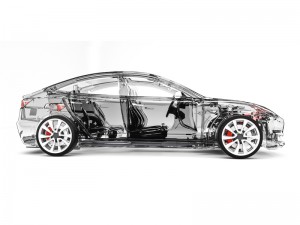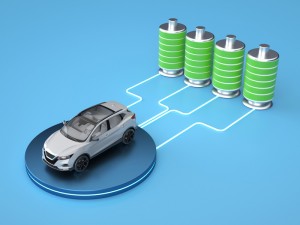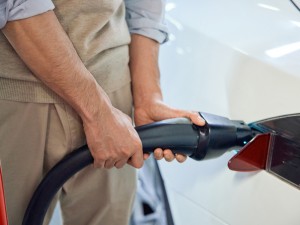Is extended range backward technology?
Last week, Huawei Yu Chengdong said in an interview that "it is nonsense to say that the extended range vehicle is not advanced enough. The extended range mode is the most suitable new energy vehicle mode at present."
This statement once again triggered a heated discussion between the industry and consumers about the augmented hybrid technology (hereinafter referred to as augmented process). And a number of car enterprise bosses, such as ideal CEO Li Xiang, Weima CEO Shen Hui, and WeiPai CEO Li Ruifeng, have expressed their views.
Li Ruifeng, CEO of Wei brand, talked directly with Yu Chengdong on Weibo, saying that "it still needs to be hard to make iron, and it is an industry consensus that the hybrid technology of adding programs is backward." In addition, the CEO of Wei brand immediately bought a M5 for testing, adding another smell of gunpowder to the discussion.
In fact, before this wave of discussion about "whether the increase is backward", ideal and Volkswagen executives also had a "heated discussion" on this issue. Feng Sihan, CEO of Volkswagen China, said bluntly that "the increase program is the worst solution."
Looking at the domestic car market in recent years, it can be found that new cars generally choose the two power forms of extended range or pure electricity, and rarely get involved in plug-in hybrid power. On the contrary, traditional car companies, on the contrary, their new energy products are either pure electricity or plug-in hybrid, and do not "care" extended range at all.
However, with more and more new cars adopting the extended range system in the market, and the emergence of popular cars such as the ideal one and the Enjie M5, extended range is gradually known by consumers and has become a mainstream hybrid form in the market today.
The rapid rise of extended range is bound to have an impact on the sales of fuel and hybrid models of traditional car companies, which is the root of the dispute between the above-mentioned traditional car companies and newly built cars.
So, is extended range backward technology? What's the difference with plug-in? Why do new cars choose extended range? With these questions, Che Dongxi found some answers after in-depth study of the two technical routes.
1、 The extended range and plug-in mixing are the same root, and the extended range structure is simpler
Before discussing extended range and plug-in hybrid, let's first introduce these two power forms.
According to the national standard document "terminology of electric vehicles" (gb/t 19596-2017), electric vehicles are divided into pure electric vehicles (hereinafter referred to as pure electric vehicles) and hybrid electric vehicles (hereinafter referred to as hybrid electric vehicles).
The hybrid vehicle can be divided into series, parallel and hybrid according to the power structure. Among them, series type means that the driving force of the vehicle only comes from the motor; Parallel type means that the driving force of the vehicle is supplied by the motor and engine at the same time or separately; The hybrid type refers to two driving modes of series / parallel at the same time.
The range extender is a series hybrid. The range extender composed of engine and generator charges the battery, and the battery drives the wheels, or the range extender directly supplies power to the motor to drive the vehicle.
However, the concept of interpolation and mixing is relatively complex. In terms of electric vehicle, hybrid can also be divided into externally chargeable hybrid and non externally chargeable hybrid according to the external charging capacity.
As the name suggests, as long as there is a charging port and can be charged externally, it is an externally chargeable hybrid, which can also be called "plug-in hybrid". According to this classification standard, extended range is a kind of interpolation and mixing.
Similarly, the non externally chargeable hybrid has no charging port, so it cannot be charged externally. It can only charge the battery through the engine, kinetic energy recovery and other methods.
However, at present, the hybrid type is mostly distinguished by the power structure in the market. At this time, the plug-in hybrid system is a parallel or hybrid hybrid hybrid system. Compared with the extended range (series type), the plug-in hybrid (hybrid) engine can not only provide electric energy for batteries and motors, but also drive vehicles directly through hybrid transmission (ECVT, DHT, etc.) and form a joint force with the motor to drive vehicles.
Plug in hybrid systems such as great wall lemon hybrid system, Geely Raytheon hybrid system and BYD DM-I are all hybrid hybrid systems.
The engine in the range extender cannot directly drive the vehicle. It must generate electricity through the generator, store the electricity in the battery or directly supply it to the motor. The motor, as the only outlet of the driving force of the whole vehicle, provides power for the vehicle.
Therefore, the three major parts of the range extender system - range extender, battery and motor do not involve mechanical connection, but are all electrically connected, so the overall structure is relatively simple; The structure of the plug-in hybrid system is more complex, which requires coupling between different dynamic domains through mechanical components such as gearbox.
Generally speaking, most of the mechanical transmission components in the hybrid system have the characteristics of high technical barriers, long application cycle and patent pool. It is obvious that "seeking speed" new cars do not have time to start with gears.
However, for traditional fuel vehicle enterprises, mechanical transmission is one of their strengths, and they have deep technical accumulation and mass production experience. When the tide of electrification is coming, it is obviously impossible for traditional car companies to give up decades or even centuries of technology accumulation and start again.
After all, it's hard to make a big U-turn.
Therefore, a simpler extended range structure has become the best choice for new vehicles, and plug-in hybrid, which can not only give full play to the waste heat of mechanical transmission and reduce energy consumption, has become the first choice for the transformation of traditional vehicle enterprises.
2、 The extended range began a hundred years ago, and the motor battery was once a drag bottle
After clarifying the difference between plug-in hybrid and extended range, and why new cars generally choose extended range, traditional car companies choose plug-in hybrid.
So for the extended range, does simple structure mean backwardness?
First of all, in terms of time, extended range is indeed a backward technology.
The history of extended range can be traced back to the end of the 19th century, when Ferdinand Porsche, the founder of Porsche, built the world's first series hybrid car lohner Porsche.
Lohner Porsche is an electric vehicle. There are two hub motors on the front axle to drive the vehicle. However, due to the short range, Ferdinand Porsche installed two generators to improve the range of the vehicle, which formed a series hybrid system and became the ancestor of range increase.
Since the extended range technology has existed for more than 120 years, why hasn't it developed rapidly?
First of all, in the extended range system, the motor is the only source of power on the wheel, and the extended range device can be understood as a large solar charging treasure. The former inputs fossil fuels and outputs electric energy, while the latter inputs solar energy and outputs electric energy.
Therefore, the essential function of the range extender is to convert the type of energy, first converting the chemical energy in fossil fuels into electric energy, and then converting the electric energy into kinetic energy through the motor.
According to the basic physical knowledge, certain consumption is bound to occur in the process of energy conversion. In the whole extended range system, at least two energy conversions (chemical energy electric energy kinetic energy) are involved, so the energy efficiency of extended range is relatively lower.
In the era of vigorous development of fuel vehicles, traditional car companies concentrate on developing engines with higher fuel efficiency and gearboxes with higher transmission efficiency. At that time, which company could improve the thermal efficiency of the engine by 1%, or even close to the Nobel Prize.
Therefore, the power structure of extended range, which can not improve but reduce energy efficiency, has been left behind and ignored by many car companies.
Secondly, in addition to low energy efficiency, motors and batteries are also two major reasons that limit the development of extended range.
In the extended range system, the motor is the only source of vehicle power, but 20 ~ 30 years ago, the technology of vehicle drive motor was not mature, and the cost was high, the volume was relatively large, and the power could not drive the vehicle alone.
At that time, the situation of battery was similar to that of motor. Neither energy density nor single capacity could be compared with current battery technology. If you want to have a large capacity, you need a larger volume, which will bring more expensive costs and heavier vehicle weight.
Imagine that 30 years ago, if you assembled an extended range vehicle according to the three electric indicators of the ideal one, the cost would take off directly.
However, the extended range is completely driven by the motor, and the motor has the advantages of no torque hysteresis, quiet and so on. Therefore, before the popularization of extended range in the field of passenger cars, it was more applied to vehicles and ships such as tanks, giant mining cars, submarines, which are not sensitive to cost and volume, and have higher requirements for power, quiet, instantaneous torque, etc.
In conclusion, it is not unreasonable for the CEO of Wei Pai and Volkswagen to say that extended range is a backward technology. In the era of booming fuel vehicles, extended range with higher cost and lower efficiency is indeed a backward technology. Volkswagen and great wall (Wei brand) are also two traditional brands that have grown up in the fuel age.
Time has come to the present. Although in principle, there is no qualitative change between the current extended range technology and the extended range technology more than 100 years ago, it is still extended range generator power generation, motor-driven vehicles, which can still be called "backward technology".
However, after a century, extended range technology has finally come. With the rapid development of motor and battery technology, the original two mops have become its most important competitiveness, erasing the disadvantages of extended range in the fuel age and beginning to bite the fuel market.
3、 Selective plug-in mixing under urban working conditions and extended range high-speed working conditions
For consumers, they don't care whether the extended range is backward technology, but which is more fuel-efficient and which is more comfortable to drive.
As mentioned above, the range extender is a series structure. The range extender cannot drive the vehicle directly, and all the power comes from the motor.
Therefore, this makes vehicles with extended range system have similar driving experience and driving characteristics as pure trams. In terms of power consumption, the extended range is also similar to pure electricity - low power consumption under urban conditions and high power consumption under high-speed conditions.
Specifically, because the range extender only charges the battery or supplies power to the motor, the range extender can be maintained in a relatively economical speed range most of the time. Even in the pure electric priority mode (first consuming the power of the battery), the range extender can not even start, nor produce fuel consumption. However, the engine of a fuel vehicle cannot always operate in a fixed speed range. If you need to overtake and accelerate, you need to increase the speed, and if you are stuck in a traffic jam, you will idle for a long time.
Therefore, under normal driving conditions, the energy consumption (fuel consumption) of extended range on low-speed urban roads is generally lower than that of fuel vehicles equipped with the same displacement engine.
However, as with pure electricity, the energy consumption under high-speed conditions is higher than that under low-speed conditions; On the contrary, the energy consumption of fuel vehicles under high-speed conditions is lower than that under urban conditions.
This means that under high-speed working conditions, the energy consumption of the motor is higher, the battery power will be consumed faster, and the range extender will need to work at "full load" for a long time. Moreover, due to the existence of battery packs, the vehicle weight of extended range vehicles with the same size is generally larger than that of fuel vehicles.
Fuel vehicles benefit from the existence of the gearbox. Under high-speed conditions, the vehicle can rise to a higher gear, so that the engine is at an economic speed, and the energy consumption is relatively lower.
Therefore, generally speaking, the energy consumption of extended range under high-speed working conditions is almost the same as that of fuel vehicles with the same displacement engine, or even higher.
After talking about the energy consumption characteristics of extended range and fuel, is there a hybrid technology that can combine the advantages of low-speed energy consumption of extended range vehicles and low-speed energy consumption of fuel vehicles, and can have more economical energy consumption in a wider speed range?
The answer is yes, that is, mix it up.
In short, the plug-in hybrid system is more convenient. Compared with the extended range, the former can drive the vehicle directly with the engine under high-speed working conditions; Compared with fuel, plug-in mixing can also be like extended range. The engine supplies power to the motor and drives the vehicle.
In addition, the plug-in hybrid system also has hybrid transmissions (ECVT, DHT), which enables the respective power of the motor and engine to achieve "integration" to cope with rapid acceleration or high power demand.
But as the saying goes, you can only get something if you give it up.
Due to the existence of mechanical transmission mechanism, the structure of plug-in mixing is more complex and the volume is relatively larger. Therefore, between plug-in hybrid and extended range models of the same level, the battery capacity of the extended range model is greater than that of the plug-in hybrid model, which can also bring a longer pure electric range. If the car scene is only commuting in the urban area, the extended range can even be charged without refueling.
For example, the battery capacity of 2021 ideal one is 40.5kwh, and the pure electric endurance mileage of NEDC is 188km. The battery capacity of Mercedes Benz gle 350 e (plug-in hybrid version) and BMW X5 xdrive45e (plug-in hybrid version) close to its size is only 31.2kwh and 24kwh, and the pure electric endurance mileage of NEDC is only 103km and 85km.
The reason why BYD's DM-I model is so popular at present is in large part because the battery capacity of the former model is larger than that of the old DM model, and even exceeds that of the extended range model of the same level. Commuting in cities can be achieved by using only electricity and no oil, and the cost of using cars will be reduced accordingly.
To sum up, for newly built vehicles, plug-in hybrid (hybrid) with more complex structure requires not only a longer pre research and development cycle, but also a large number of reliability tests on the whole plug-in hybrid system, which is obviously not fast in time.
With the rapid development of battery and motor technology, the extension of range with simpler structure has become a "shortcut" for new cars, directly passing the most difficult power part of car building.
But for the new energy transformation of traditional car companies, they obviously don't want to give up the power, transmission and other systems that they have invested many years of energy (human and financial resources) in research and development, and then start from scratch.
Hybrid technology, such as plug-in hybrid, which can not only give full play to the waste heat of fuel vehicle components such as engine and gearbox, but also greatly reduce fuel consumption, has become the common choice of traditional vehicle enterprises at home and abroad.
Therefore, whether it is plug-in hybrid or extended range, it is actually the turnover scheme in the bottleneck period of current battery technology. When the problems of battery range and energy replenishment efficiency are completely solved in the future, the fuel consumption will be completely cleared. Hybrid technology such as extended range and plug-in hybrid may become the power mode of a few special equipment.
Post time: Jul-19-2022



